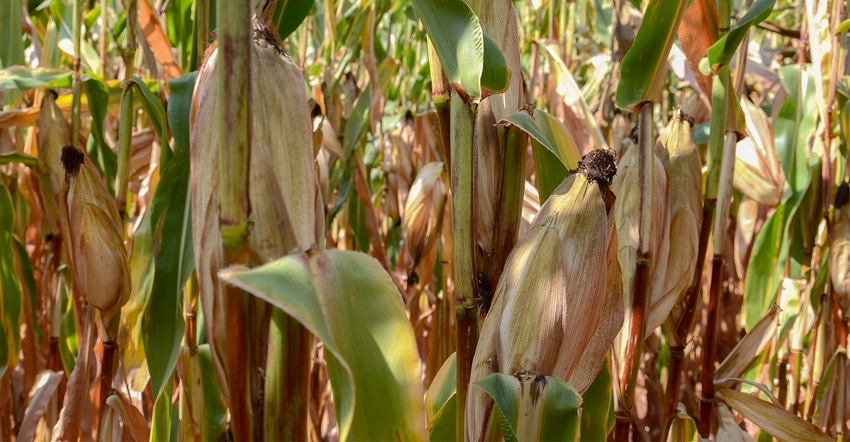
After late planting in many areas, how is corn going to mature and dry down? Some farmers were able to start planting in April, whereas many growers couldn’t start planting until the last week of May and even June. We are having extremes of weather. Can we blame global warming for these weather extremes? That’s a topic for another day.
I’m afraid we’re going to have some high-moisture corn and field drying will be slow. Most corn will reach black layer, which indicates the end of dry matter accumulation in the kernels. At this stage, moisture varies from 32% to 35%, depending on the hybrid. Ideal moisture for grain harvest from a shelling and drying perspective is likely 15% to 20%.
The highest yield is generally at 28% moisture. After that point, yield starts going down because of field losses due to stalk lodging, ear droppage, and insect and disease damage. Some believe there’s invisible yield loss when corn is left to dry down in the field too long.
What to expect
What happens next, and how does corn dry down to harvestable moisture?
In a typical season, grain drying in the field ranges from 0.5% to 0.8% moisture loss per day, which occurs mostly by evaporation. Some hybrids dry down faster than others. Hybrids that have better disease tolerance live longer, die later and dry slower. Plant population, amount of nitrogen used and use of foliar fungicides all affect the rate of drydown and grain moisture at harvest.
As corn matures, moisture is lost through the cob, ear shank, exposed ear tips and husks. Hybrids with thinner cobs tend to lose moisture faster.
Corn breeders constantly compromise to find hybrids with the right combinations that will produce the highest income for growers. What are other agronomic and genetic characteristics of corn hybrids that affect rate of drydown?
Here are four drydown factors.
1. Hybrid relative maturity and other traits such the thickness of the pericarp, or skin of the kernel, can affect drydown rate. Grain with thicker skin and higher test weight dries slower; chaffy or lightweight grain dries faster.
2. Upright ears tend to capture moisture in the husks and slow down the drying process. Droopy ears after corn is mature lose moisture faster than upright ears.
3. Husk cover, number, thickness and tightness of husks can affect rate of drydown. Cob thickness and kernel depth also influence how fast the grain dries. Since hybrids differ in the aforementioned characteristics, they will dry down at different rates, even if their relative maturity rating is similar.
4. Temperature, rainfall and amount of sunshine influence grain drying. Weather conditions after grain fill is complete may have a major effect on how fast grain dries in the field. On average, 20 to 25 heat units are needed to dry grain in the field by 1 percentage point.
So there are lots of factors that can influence grain moisture. Let’s hope for a warm, dry, safe and bountiful harvest!
Nanda is president of Agronomic Crops Consultants LLC. Email him at [email protected] or call 317-910-9876.
About the Author(s)
You May Also Like




